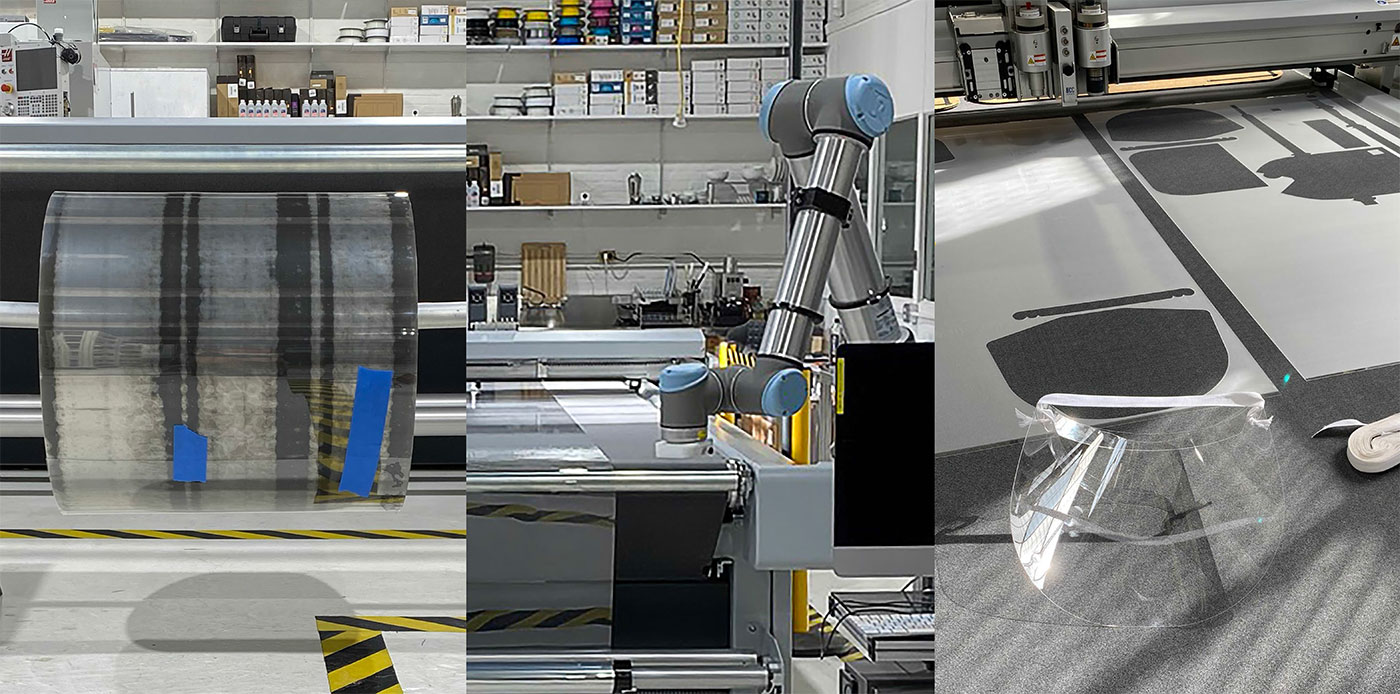
Production of face shields at Pratt Institute
This is the second in a series of posts exploring how the Pratt Institute community is rallying its creative resources to help with the challenges of COVID-19. In this story, we feature how Pratt has harnessed its campus resources to produce protective face shields for area hospitals.
As COVID-19 escalated in New York City and healthcare systems were overburdened, the unique resources of Pratt Institute were put into action. Identifying that the shortage of personal protective equipment (PPE) for medical professionals and frontline workers in the local community was a need that Pratt could quickly meet with a significant impact through its resources, equipment, and available supplies, a plan was implemented to unite the strengths of the campus. This initiative has been managed by the Information Technology division with the School of Design and the School of Architecture, working in close coordination with senior academic and administrative leadership. By the end of last week, around 15,000 shields were produced at Pratt for distribution to local medical facilities.
“This was seen as a stop-gap measure for us to fill as it takes a long time for industries to ramp up their scale of production,” said Richard Sarrach, Director of the Interdisciplinary Technology Lab (ITL), who has been overseeing all of the production for this effort at Pratt. “During that time we were able to have an impact. It’s really been about looking at Pratt as this center and trying to figure out what are those concentric circles of need that extend from us that people aren’t paying attention to.” For instance, along with area hospitals, their outreach identified a nearby Cobble Hill nursing home that had seen a major reduction in staff and PPE due to the crisis.
“The community at Pratt has responded with passion and ingenuity to this crisis,” said Anita Cooney, Dean of the School of Design. “There has been an outpouring of expression to help—from students, faculty, and staff—which has had to be weighed against limits of a closed campus to ensure safety for all. While a limited few have participated in the production of face shields on campus, our community is ever ready to help.” For instance, Cooney reached out to the Fashion Department to help with a need for elastic to make the face shields, which led to emails with several professors, including Gina Gregorio, Adjunct Associate Professor of Fashion Design, who connected Cooney to her colleague and Pratt alumna Jessica Alcade who helped source the material needed to finish Pratt’s production run. “I continue to be impressed by the dedication of our community and the enormity of our reach,” Cooney said.
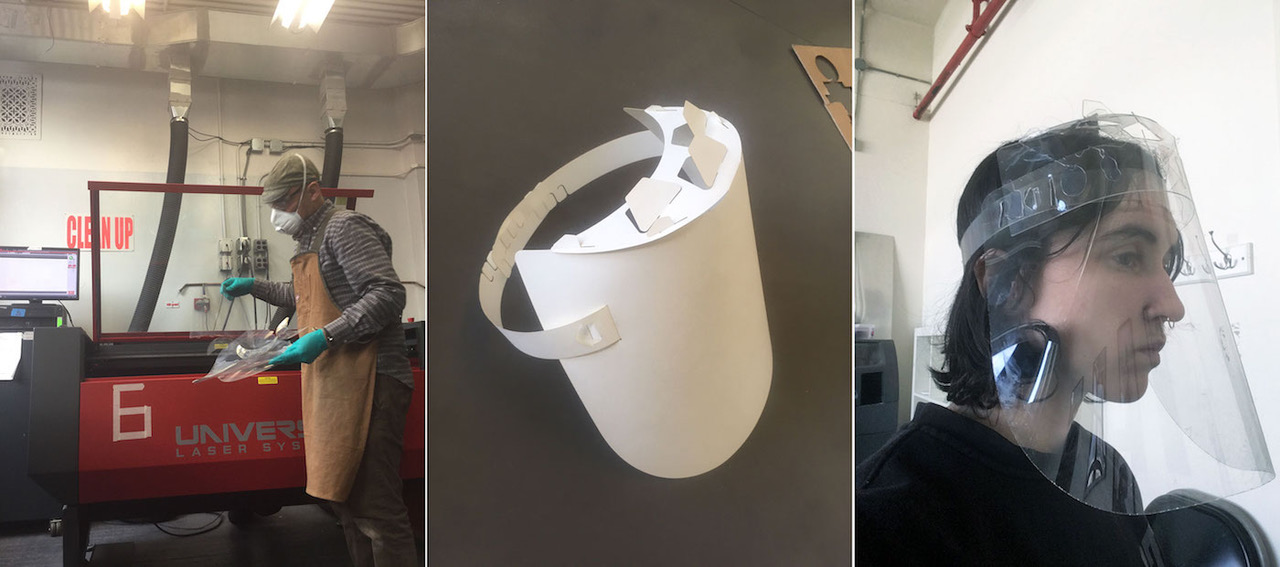
Working on mono-material face shields in the School of Architecture (courtesy Mark Parsons)
The School of Architecture also converted its workshops into PPE production spaces, cutting 849 mono-material, plastic face shields within the space of three days using laser cutters, under the direction of Mark Parsons, Director of Production & Technology in the School of Architecture. Critical to this effort was maximizing the output of PPE while minimizing any individual’s potential exposure which included reducing to the greatest degree possible the contamination of the activated workspaces. As the School of Architecture Dean Harriet Harriss said, “What matters at Pratt is that we do things as a collective, working beyond the parameters of school, department, and program in order to produce the vital equipment needed to support our wider community as efficiently and effectively as possible.” She added, “I’ve also been humbled by the number of architecture students and faculty who have been producing vital equipment from their homes, such is their willingness to make a difference.”
As the N95 filtering respirator masks preferred by healthcare workers are scarce, the face shields made on campus can offer a level of protection and extend the life of in-demand N95 and surgical masks. Pratt has invested in industry-grade equipment, particularly in the ITL, to offer students experience working with these tools. That investment, in turn, made it possible for Pratt to rapidly produce a large quantity of PPE for hospitals, with distribution facilitated by the networks of faculty, staff, alumni, and others in the Pratt community.
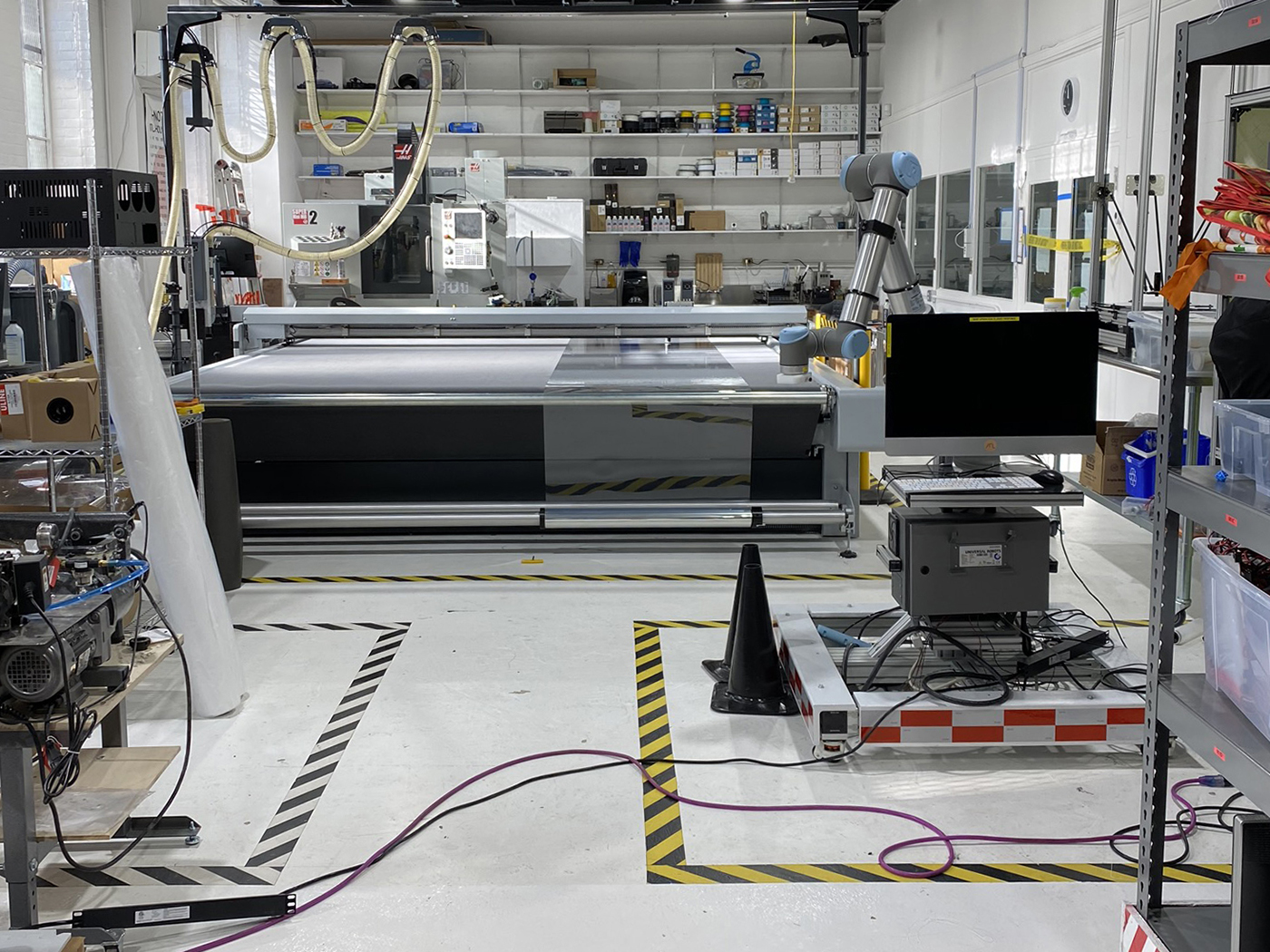
Roll feed setup with the Zünd digital cutter for the non-stop automatization of cutting shields for attachment to a 3D-printed visor (photo by Scott Sorenson)
“When I learned that there was an effort to fill the gap between manufacturers being able to get PPE out to medical facilities and our current situation, I immediately thought about the resources at Pratt,” said Joseph Morris, Visiting Assistant Professor and Form & Technology Lab Manager for the School of Design. “My home department is Industrial Design and we had what amounts to a production facility sitting unused while we had skilled technicians working from home, and a need to fill.” Morris has also been involved in the Helpful Engineering volunteer group mobilizing to assist in the COVID-19 pandemic and through that connection, he secured a 6,000-pound donation of PET plastic for face shield fabrication from Douglas Stephens Plastics Inc. in Patterson, New Jersey.
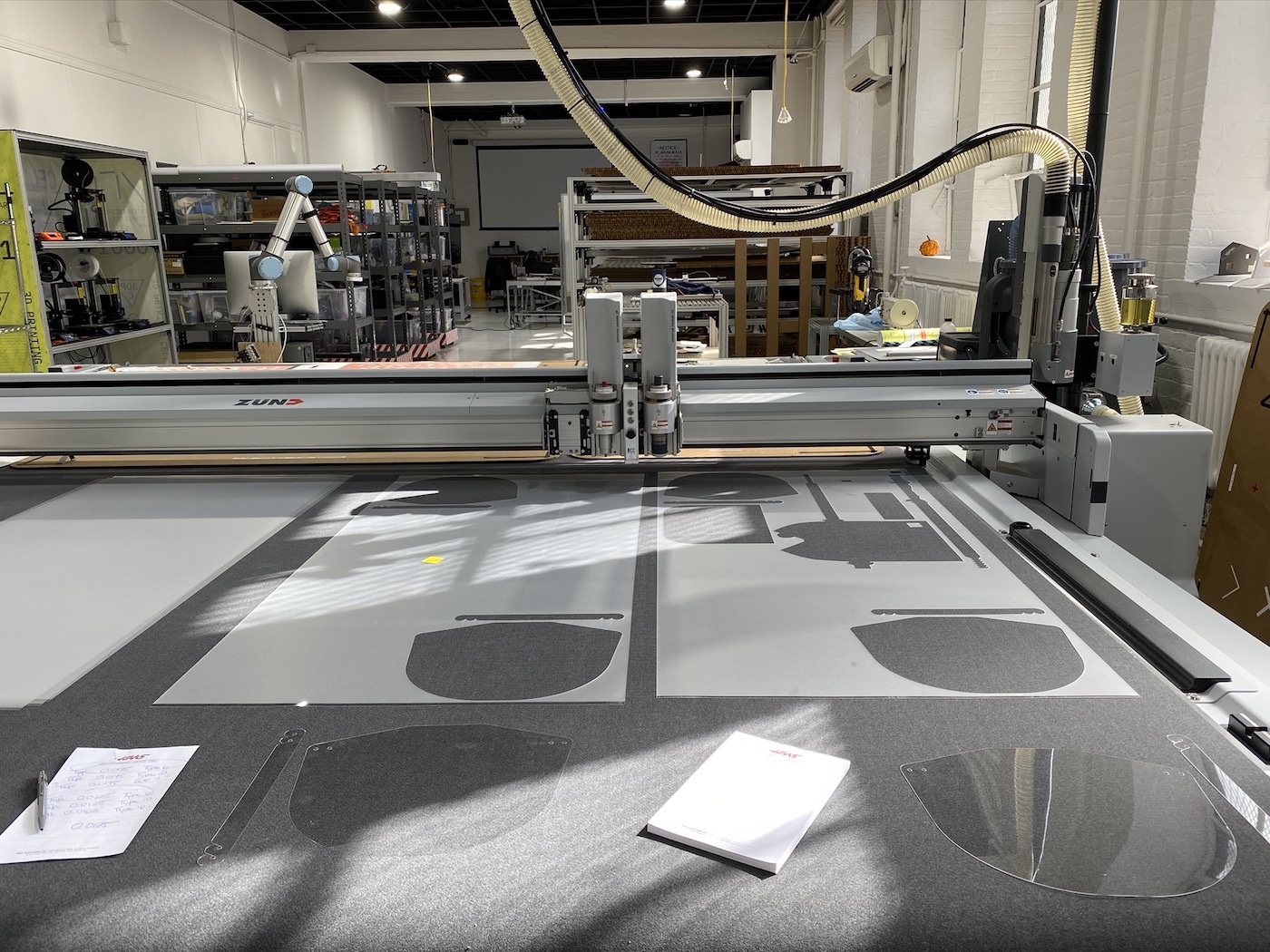
Prototyping three different thicknesses of PET material and three different face shield design options for their feasibility and optimization (photo by Scott Sorenson)
“Richard [Sarrach] and I went in on March 26th and produced a series of prototypes and came back to the group and communicated what would be viable,” said Scott Sorenson, Senior Researcher of Design and Digital Technologies in the ITL and Visiting Assistant Professor in Undergraduate Architecture. “We started with 50 ideas and we looked at a dozen prototypes out there and into how we could make an impact, understanding our team, our materials, and deliveries. We took all these pragmatics and did a couple of prototypes and then solidified what it was going to look like.” They ultimately worked with the Open Source Face Shield V1.1 developed at New York University, the Origami Face Shield from Helpful Engineering, and the Airway Shield developed at Columbia University.
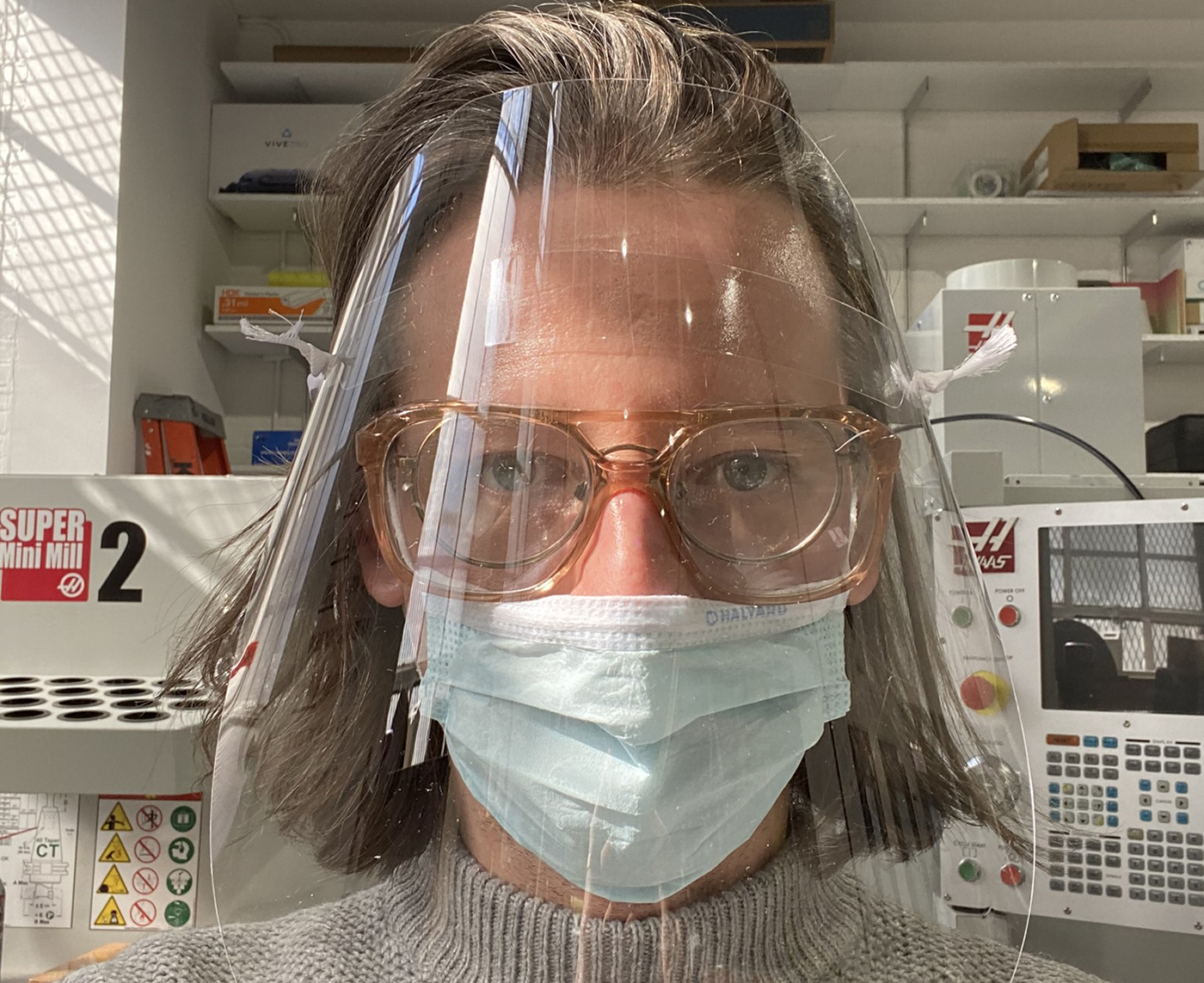
The first prototype of the Open Source Face Shield developed at NYU, made in Pratt’s Interdisciplinary Technology Lab (ITL) (photo by Scott Sorenson)
With the technology on campus—including a large, high-speed Zünd digital cutter, laser cutters, and a fleet of over 50 3D printers—the team has cut plastic sheeting for shields and 3D-printed headbands. Attention has been given to materials that are tough and flexible while the designs have been made to fit a diversity of wearers and be easily cleaned to reduce the risk of contamination. “This is the first time in my career I’ve been able to take an action that is so clearly important and necessary to the health of others,” said Ashley Marcovitz, 3D Printing Center Manager and Visiting Instructor in Fine Arts.
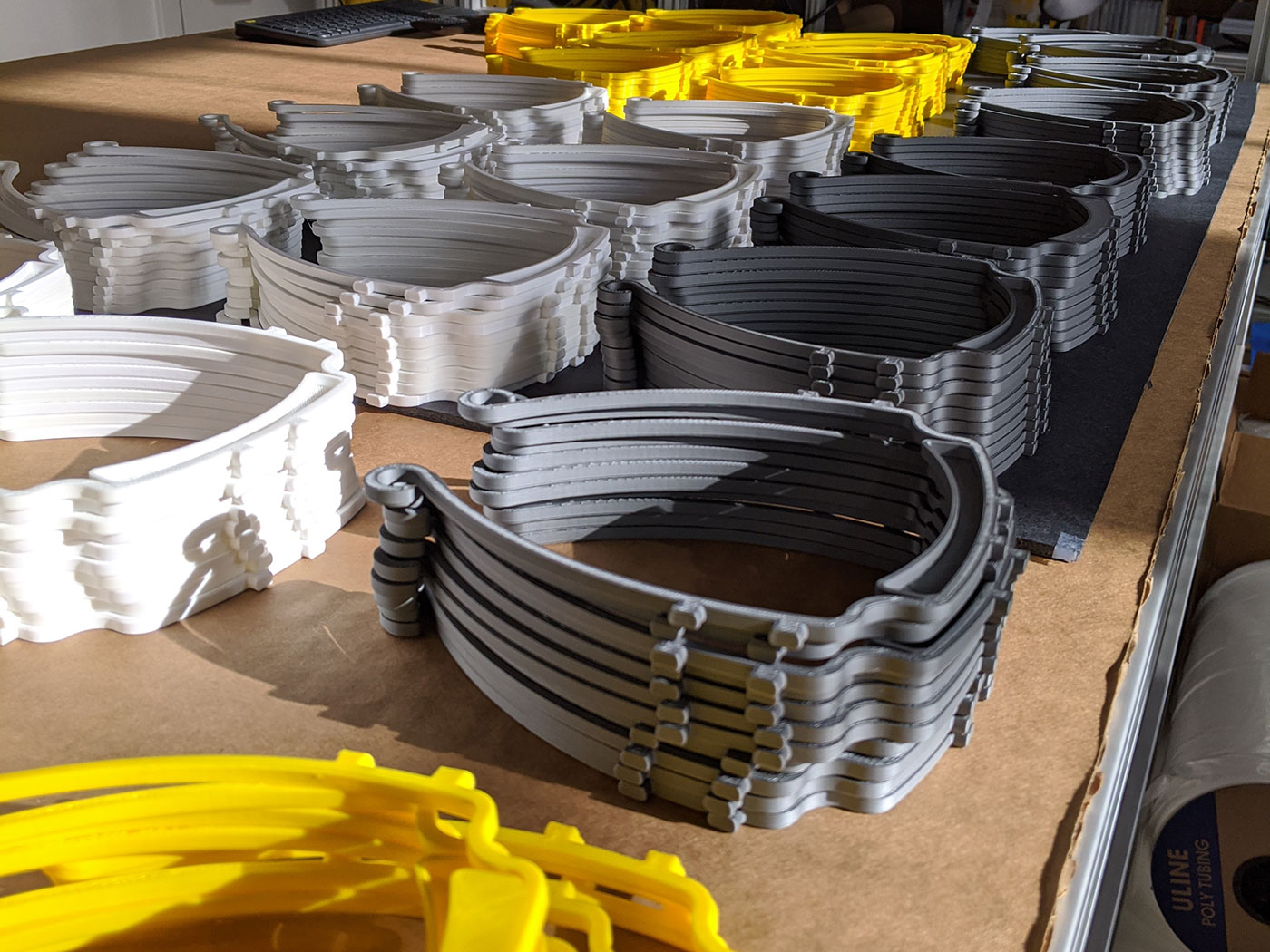
3D-printed face shield components created at Pratt Institute (courtesy Richard Sarrach)
Critical to this action has been working closely with Pratt Campus Safety to minimize risk to those involved. Social distancing has been required, PPE has been worn by everyone, and Facilities staff have been sanitizing all the areas being used. The effort to produce these masks has often involved members of the team working 12-hour shifts to get these face shields into hospitals where they can help save lives.
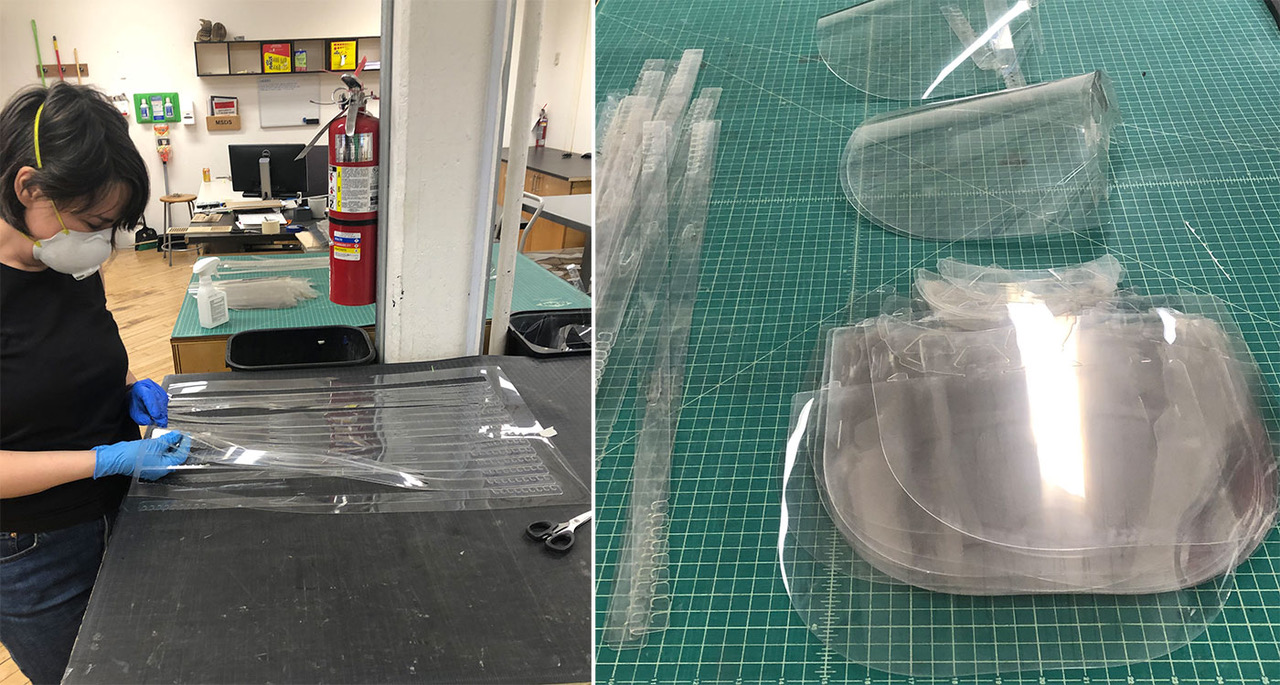
Jess Osserman assembling the Origami Shield in the Laser Lab in Pratt’s School of Design (courtesy Joseph Morris)
“While we’re taking the utmost precaution with our health and safety, I know it is no small feat on the administration’s side to determine protocol, designate us workers as essential, and face the logistical hurdles of transforming our school-specific prototyping facilities into a full-scale coordinated manufacturing operation,” said Jess Osserman, Technician and Visiting Instructor in the School of Design. “I am proud that as a community of fabricators and designers, we can use our skill sets and resources to fill voids in the manufacturing lag of PPE.” She added that with their small team, every step of this process has required incredible coordination across campus, with challenges including getting those huge spools of PET plastic into the labs. “Without the help of Frank Attong and Jose Estevez in the receiving dock and their expertise in moving heavy loads, we would truly be at a loss,” Osserman said. “While the campus only has a slender crew approved to work on this, we are operating as a team, even though we rarely see each other face-to-face.”
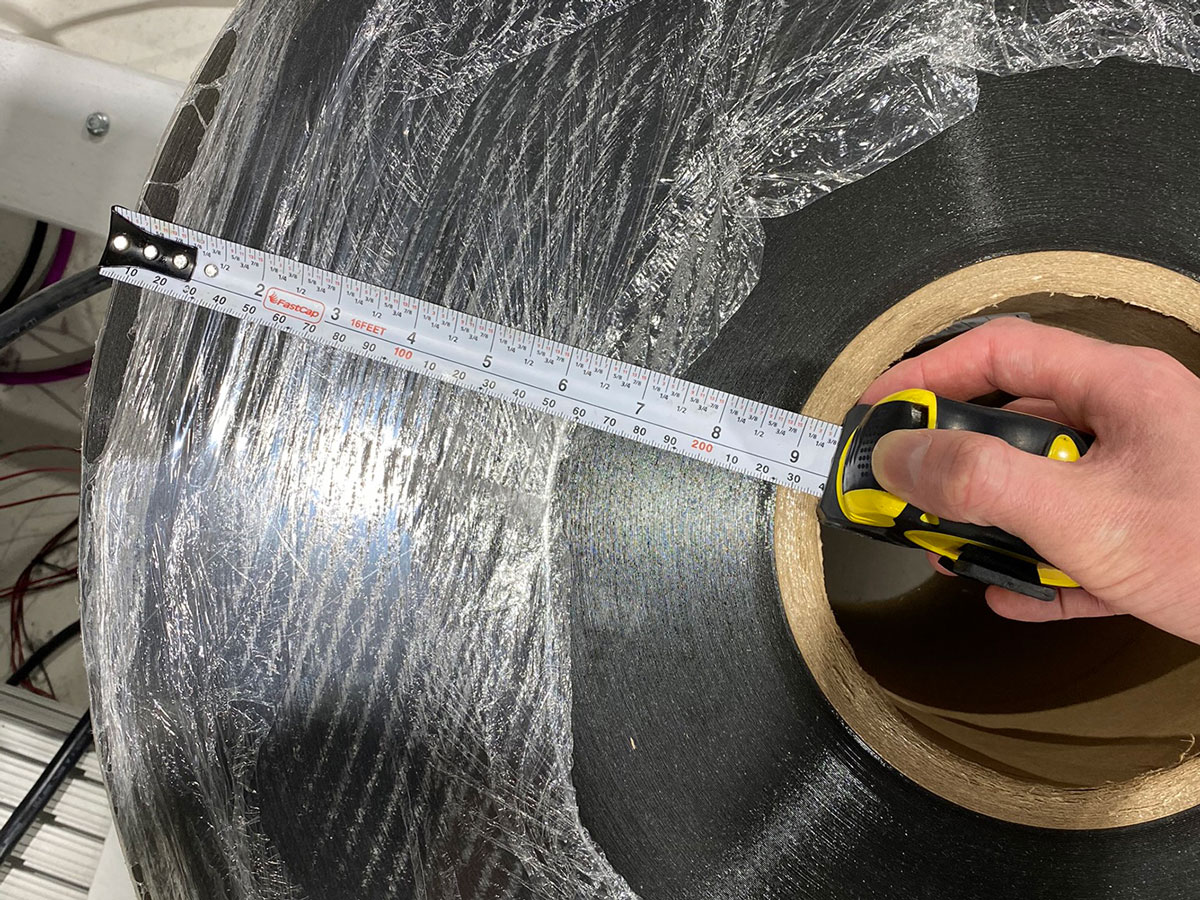
Surveying the material donation of PET plastic spools, each weighing about 550 pounds (photo by Scott Sorenson)
Thousands of these face shields have now been distributed to New York City area hospitals and other healthcare spaces. All arrived packaged with this message from Pratt Institute President Frances Bronet:
On behalf of the many creative and talented individuals within the Pratt community who produced this personal protective equipment, we offer it to you with our deepest gratitude for your tireless efforts during this time when your skills and commitment are desperately needed. Over 130 years ago our founder, Charles Pratt said, “Be true to your work and your work will be true to you.” We at Pratt acknowledge your selflessness and know what being true to your work means to us all.
In addition to Morris, Marcovitz, Osserman, Sarrach, and Sorenson, the project’s core team has included: Victor Camargo, Lab Assistant in Information Technology; Ted Ngai, Visiting Associate Professor in Undergraduate Architecture and Senior Research Associate at the ITL; and Melissa Skluzacek, Manager of Resources and Technology and Visiting Assistant Professor in the School of Design.
Pratt has a long history of bringing its innovative thinking to extraordinary challenges, whether helping to design camouflage during World War I and II or engaging in local recovery after Hurricane Sandy, something that has been very much on the minds of the leaders of this new endeavor.
“The Institute moved reflexively from an instructional platform to the production of vital equipment within a week’s time—it was in its DNA,” said Joseph Hemway, Vice President of Information Technology. “To see Pratt’s legacy of responding to past needs carried forward to the present was a powerful and moving moment for all of us. This crisis has allowed us to help where it is needed the most while being stewards of that legacy.”
While the team at Pratt is continuing to work on face shields until they exhaust their material, further research is being done to determine Pratt’s capacity for producing additional items or components that could be part of the larger supply chain needed to combat the pandemic. The Institute will continue to respond to these unprecedented circumstances through ingenuity, technology, and collaboration.
For the first in this series on how Pratt is responding to COVID-19, see “Members of the Pratt Community Sew Masks and 3D-Print Face Shields to Combat COVID-19.” For daily updates on how the Pratt community is taking action, visit the Pratt Daily Hub.